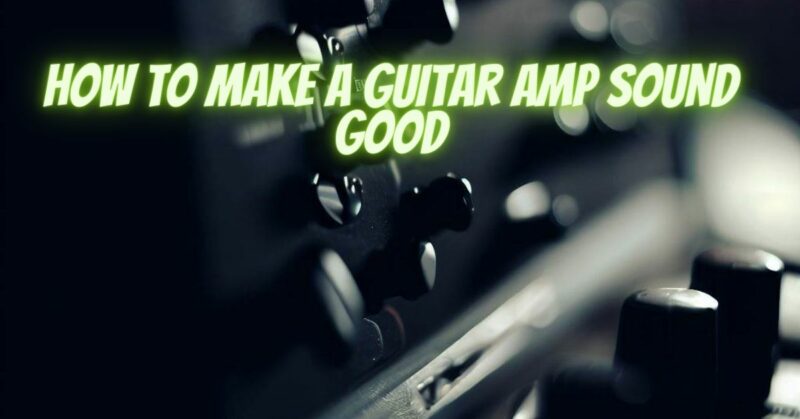Guitar amplifiers are the canvas upon which guitarists paint their musical expressions. The pursuit of a captivating and signature sound is a journey that every guitarist embarks upon. While the initial tone of your guitar and amp combination lays the foundation, there are various techniques and considerations that can elevate your amplifier’s sound to new heights. In this article, we’ll delve into the art of enhancing the sound of your guitar amplifier, exploring tips, tricks, and methods to help you achieve a truly remarkable sonic experience.
1. Choosing the Right Amp:
Before delving into sound enhancements, it’s essential to select an amplifier that aligns with your musical style and preferences. Different amps offer distinct tonal characteristics, such as warm tube tones or crisp solid-state clarity. Understanding your desired sound is the first step towards enhancing it.
2. Quality Cables and Connections:
The path between your guitar and amplifier is critical. Using high-quality instrument cables ensures a clean and interference-free signal transfer. Additionally, securely connecting cables to your guitar, pedals, and amp reduces the chance of unwanted noise and signal degradation.
3. Tone Shaping with EQ:
The EQ controls on your amplifier – bass, midrange, and treble – provide the means to shape your tone. Experiment with different EQ settings to find the sweet spot that complements your playing style. Boosting the midrange can add warmth and presence, while adjusting the treble and bass can provide clarity and depth.
4. Effects and Pedals:
Effect pedals allow you to sculpt your sound further. Experiment with pedals such as overdrive, distortion, delay, reverb, and modulation to add texture and character to your tone. Properly integrating effects can enhance your sound without overpowering it.
5. Tube and Component Upgrades:
For tube-based amplifiers, swapping out tubes can significantly impact your sound. Different tubes offer unique tonal characteristics, so research and experimentation can help you find the tubes that best suit your desired sound. Additionally, consider upgrading capacitors and other components for improved performance.
6. Speaker Selection:
The speaker is a crucial component that shapes your amplifier’s sound. Different speakers have distinct tonal qualities, affecting factors such as clarity, midrange presence, and bass response. Exploring different speaker options can lead to a sound that resonates with your musical vision.
7. Mic Placement for Recording:
If you’re recording your amplifier’s sound, microphone placement is crucial. Experiment with microphone distance and angles to capture the nuances of your amp’s sound accurately. Different placements yield different tonal characteristics.
8. Room Acoustics:
The environment in which you play can impact your amplifier’s sound. Experiment with playing in different rooms to understand how room acoustics affect your tone. Rooms with natural reverberation can add depth to your sound, while deadened rooms can yield a tighter, focused tone.
9. Play with Dynamics:
Varying your playing dynamics – from soft fingerpicking to aggressive strumming – can add depth and expressiveness to your sound. Utilize the amplifier’s response to your playing style to create a dynamic and engaging sonic experience.
10. Listen and Experiment:
Ultimately, the journey of enhancing your amplifier’s sound is a personal one. Trust your ears, be open to experimentation, and take the time to listen critically to the changes you make. Small adjustments can lead to substantial improvements in your overall sound.
Enhancing the sound of your guitar amplifier is a blend of art, science, and exploration. By considering the right amp, optimizing connections, utilizing EQ and effects, and exploring speaker options, you can unlock a sonic landscape that resonates with your musical identity. Remember that your journey towards a captivating sound is unique, and the process of enhancement is a continuous one. As you refine your setup, you’ll uncover a realm of possibilities that enrich your playing experience and captivate your audience’s ears.


